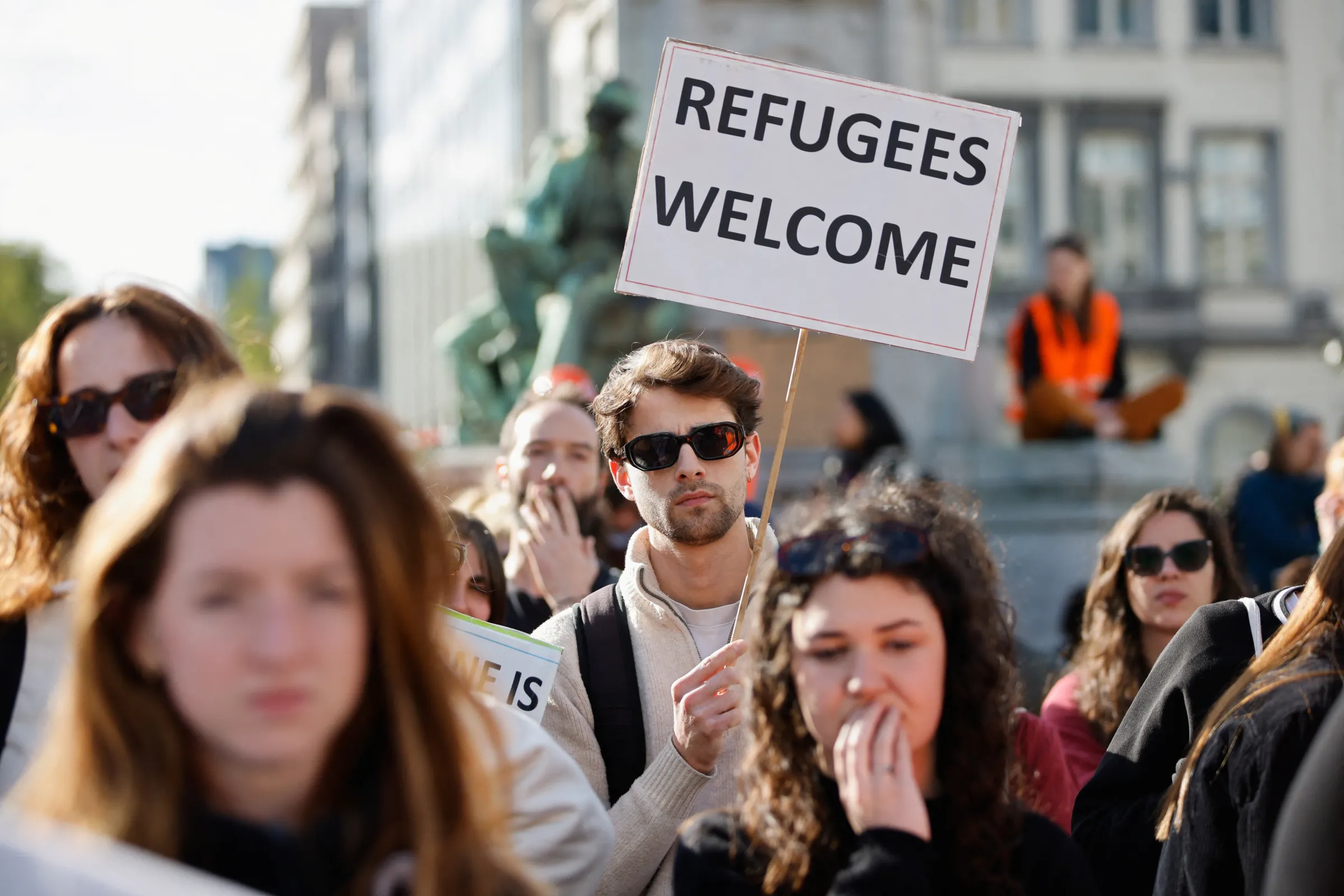Context is powered by the Thomson Reuters Foundation Newsroom.
Our Standards: Thomson Reuters Trust Principles

Human rights activists protests outside the European Parliament ahead of a vote by lawmakers on the EU's Pact on Asylum and Migration, in Brussels, Belgium April 10, 2024. REUTERS/Johanna Geron
While some LGBTQ+-friendly countries see hundreds of claims, others count just a handful each year.
LONDON - As protections for LGBTQ+ people are rolled back in parts of the world, the European Union has said that the number of asylum applications based on sexual orientation and gender identity have increased in recent years.
Yet many European countries are looking to limit migration, stirring worries among LGBTQ+ advocates that this vulnerable group could be impacted.
While the EU does not provide concrete data, its asylum agency estimates the number of asylum applications from LGBTQ+ individuals are on the rise. Countries like Uganda, Zimbabwe and Nigeria, which criminalise homosexuality with harsh penalties, are common origin countries for LGBTQ+ asylum seekers in the EU.
Here’s what you need to know about LGBTQ+ asylum in the EU.
The United Nations’ Geneva Convention says sexual orientation and gender identity constitute solid grounds to claim refugee status, and a 2011 EU Directive specifies that sexual orientation, along with race, religion and nationality, is one of the qualifying categories for asylum.
Legally, this means all EU member states provide asylum to LGBTQ+ people. However, protections for LGBTQ+ refugees vary across the bloc.
There is “no uniformity in LGBTQ+ asylum” in EU countries, said Rustam Kypshakbayev, senior advocacy officer at the European region of the International Lesbian, Gay, Bisexual, Trans and Intersex Association (ILGA), an advocacy group.
ILGA’s Europe Rainbow Map, which ranks European countries on their LGBTQ+ equality laws and policies, shows more countries include a person’s sexual orientation, such as gay or lesbian, as a qualification for asylum, rather than gender identity, which is an individual’s sense of their own gender, whether man, woman or nonbinary.
A new set of rules managing migration and establishing a common asylum system was agreed on at the EU level in 2024.
These rules are set to be gradually rolled out at national levels across EU countries, and ILGA said it is advocating for the inclusion of guarantees for LGBTQ+ asylum seekers in laws across member states.
There is no requirement for the EU or its member states to collect and publish statistics on the number of asylum claims based on LGBTQ+ identity. Belgium is the only EU country to do so.
Civil society groups provided estimates to the European Union Agency for Fundamental Rights in 2017, based on the number of applicants who contacted them for help. These figures do not represent the full picture.
In Finland, an estimated 500 asylum seekers had claims with links to sexual orientation or gender identity, while the Netherlands had between 100 and 1,000 applications. Other countries had far fewer, like Denmark with 70 applicants and Poland with just two or three. Some countries are missing entirely from the data.
LGBTQ+ refugees are at a higher risk of exposure to violence and discrimination not just in their home country, but also in receiving countries, ILGA-Europe says.
They can sometimes be victims of violence again in reception centres, according to the Prisme Federation, a group of LGBTQ+ individuals and associations.
In the past, asylum seekers were subjected to invasive tests to prove their sexual and gender identity in the EU. One case, which required a Nigerian asylum seeker to undergo psychological tests to prove he was gay, led to the EU's Court of Justice barring such tests in 2018, ruling they were “a disproportionate interference in the private life of the asylum seeker."
But members of the LGBTQ+ community face other issues proving their cases to European authorities.
They may find it difficult to prove their identity if they “lack the vocabulary or do not know the exact terminology,” Kypshakbayev said, adding that authorities can find this “suspicious”.
Kypshakbayev gave the example of a transgender person who might instead describe themselves as a gay man or a lesbian woman because of constraints around transgender identity back home.
“In other cases, they can be asked questions about their lifestyle or behaviour that supposedly should prove their [identity], but because such questions can be Western culture-specific, an LGBTQ+ person can fail to respond to them ‘correctly,’” Kypshakbayev added.
Authorities may ask whether an applicant visited gay clubs or attended Pride marches, when they often come from countries that criminalise same-sex relations, Kypshakbayev explained.
LGBTQ+ people can be rejected for asylum status if their country is considered to be generally safe. For example, Georgia is considered a safe nation, but rights groups argue it is not safe for LGBTQ+ people.
The country, which is applying for EU membership, should be taken off lists of “safe states” to reflect Georgian anti-LGBTQ+ legislation passed last year, lawyers and activists say.
This story is part of a series supported by Hivos's Free to Be Me programme.
(Reporting by Jade Wilson; Editing by Ayla Jean Yackley)
Context is powered by the Thomson Reuters Foundation Newsroom.
Our Standards: Thomson Reuters Trust Principles